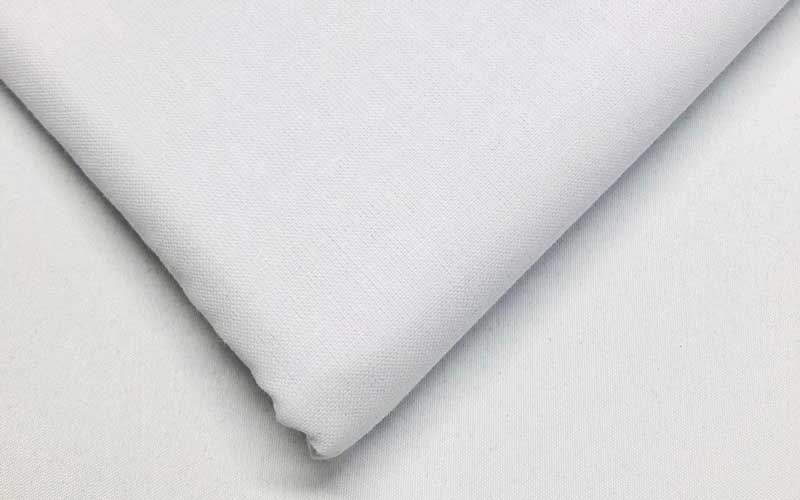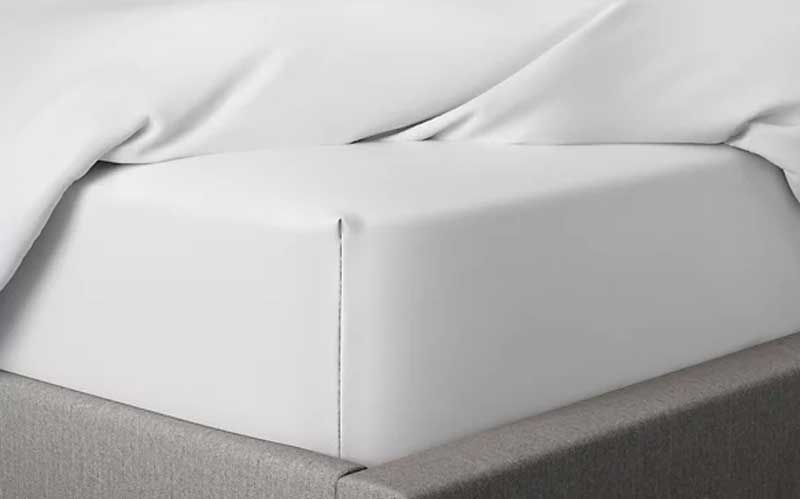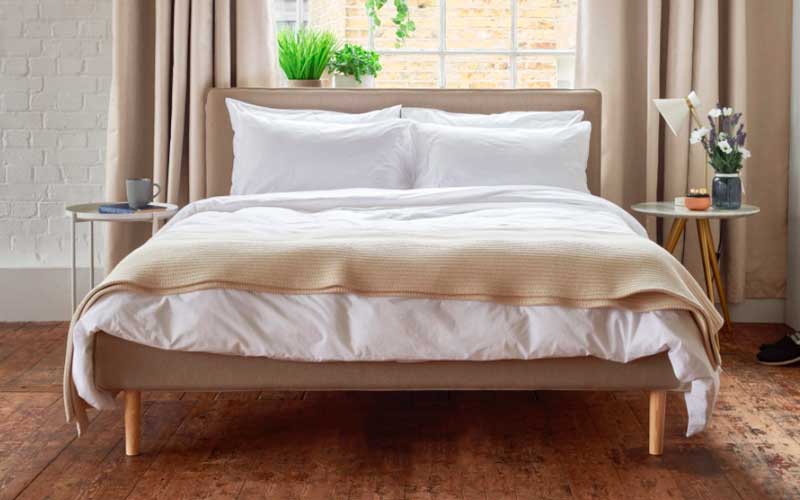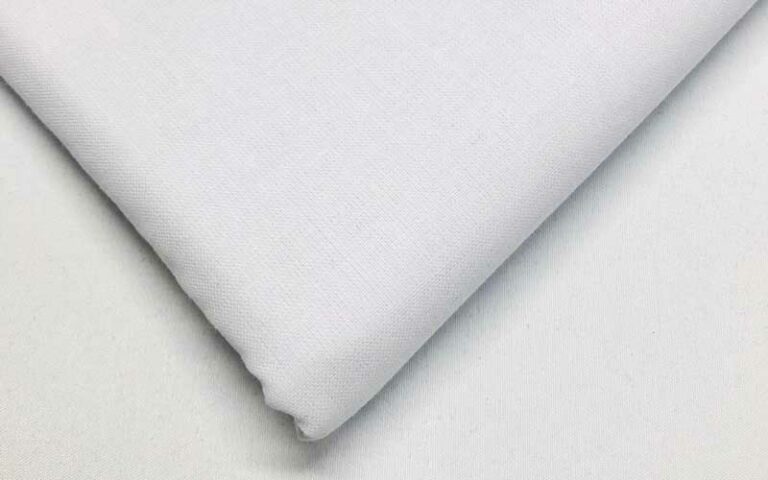To get the best sleep possible, you need the right mattress, pillows and bedding. To get high-quality bedding, and more specifically, superior sheets, you’ll need a high thread count, right? We’ve all heard that advice, but the truth is a higher thread count isn’t always better.
Nowadays, many brands will artificially pad their thread count numbers to be able to charge a higher price. However, thread count alone is not a guarantee for quality sheets. You need to know several factors, such as type of cotton, ply count, and weave, to make a well-informed decision.
What does thread count mean?

Thread count actually defines the number of threads woven into a square inch of material. The set number includes threads woven horizontally ( “weft”), as well as vertically (“warp”). The count is calculated by adding up the total number of weft and warp threads in a square inch. For example, if there are 100 horizontal threads and 100 vertical threads in a square inch, the thread count of this sheet will be 200.
This is often used as an indicator of the softness and the feel of fabric while showcasing a higher quality option. With that said, thread count isn’t the only essential feature for the overall quality of a set of sheets.
What is the best thread count for sheets?

In general, you can find quality bedsheets with thread counts ranging from 200 to 500. At a minimum, we don’t advise you to go under 200 since it most likely won’t feel as soft, which on its own can lead to a less comfortable sleeping experience.
With that said, keep in mind that type of fabric and its weave make a difference in the best thread count. Another crucial feature is the percale (also known as “plain weave”). In general, average quality percale sheets will be found around 180-200 thread count, while a sateen weave has a more tightly woven pattern. That means their average quality will be closer to 250-300. Cotton is the most popular option since it’s a breathable fabric that can be machine washed.
Here is an example of the most common high-quality thread counts sheets in various materials:
- Egyptian Cotton: 300-400
- Cotton: 200-400
- Sateen Weave: 300-600
- Percale Weave: 200-400
- Bamboo: 300-500
- Linen: 80-140
Understand that not all fabrics are measured by using thread count. Silk, for example, is measured in momme, which is a measure of weight that looks for the number of pounds in a piece of silk. With this material, you would want to stay around 17-22 momme.
Keep in mind that the count of threads in a sheet is not an end-all, be-all measurement. There are many other factors to consider, such as the quality of the yarns, the brand’s production process, the weave type etc. A lot of features contribute to the performance of a set of sheets.
Is a higher thread count better?

Yes, but to a certain extent. Generally speaking, sheets with a thread count of 600 will feel softer and smoother to the skin compared to bedsheets with a count of 200. But some brands have been taking advantage of this, and they’ve been inflating their thread count in order to jack up the price.
When a manufacturer says they offer a product with a count of 1000 threads, they are supposably allowed to ask for a higher price. However, anything over 1,000 is typically an indication of lower-quality sheets. That’s because companies have counted multi-ply yarns, which are rougher and lower-quality.
Thus, we created this guide to help you make a decision that relies not only on thread count but also on the other three key features you need to consider. They are the following:
Weave
The weave of a sheet describes the way the threads are woven together. There are two options, which are percale or sateen.
Sateen sheets use a satin weave in which the weft threads lie across four warp threads, whereas percale sheets use a plain weave. That’s where horizontal (weft) and vertical (warp) threads alternate evenly, like a checkerboard pattern. Good-quality percale sheets have a thread count between 250 to 500, while sateen sheets require a higher thread count between 300 to 600 so that snags along the wefts can be reduced.
Fibre Staple
Higher-quality threads use longer fibres in order to avoid them from sticking out in the weave. The best option when it comes down to staples is the long-staple or extra-long-staple (ELS) cotton. All you have to do is look for the phrase “long-staple” in the description or product label. This can be found in Supima, or Egyptian products, which are definitely high-quality sheets.
Ply count
When we talk about ply count, there are two options, and they are either single-ply or multi-ply. Single-ply sheets describe sheets with one strand of yarn per thread, and usually, they are finer and stronger.
Whereas multi-ply items typically have to use more strands because the threads are lower-quality, and that’s how many brands trick customers with a higher thread count. That’s one of the main reasons we say that a higher thread count isn’t always better!

What is the highest thread count for sheets?
This is a question that many people want to know. The truth is some sheets can have thread counts as high as 1800 or 2000, but if that’s the case, it’s most likely inflated, and the threads are lower-quality since the item is made with a multi-ply count.
We highly recommend avoiding this type of product because they are likely made with cheap materials and won’t provide the feeling you’re searching for. Now your money’s worth, and don’t forget to read the fine print when you see such a number since there is only so much that can be threaded into one square inch of fabric.
Bottom line
Yes, thread count matters when shopping for bed sheets, but to e certain extent, which is why you should remember that the highest one isn’t always the best option. Staying between 300 to 500 is a solid range for high-quality bed sheets, and most items above that usually use multi-ply yarns that lower the quality of a product. You can also see our selection of the best fitted sheets.
You should check the thread count of a sheet set, but this shouldn’t be the only factor you make your decision on. Make sure to look at the fibres, the weave and the staple length since they also affect the quality.
If you think we missed something on the subject or if you have any questions and concerns, please drop us a line in the comments below, and we’d try to respond as soon as possible!

